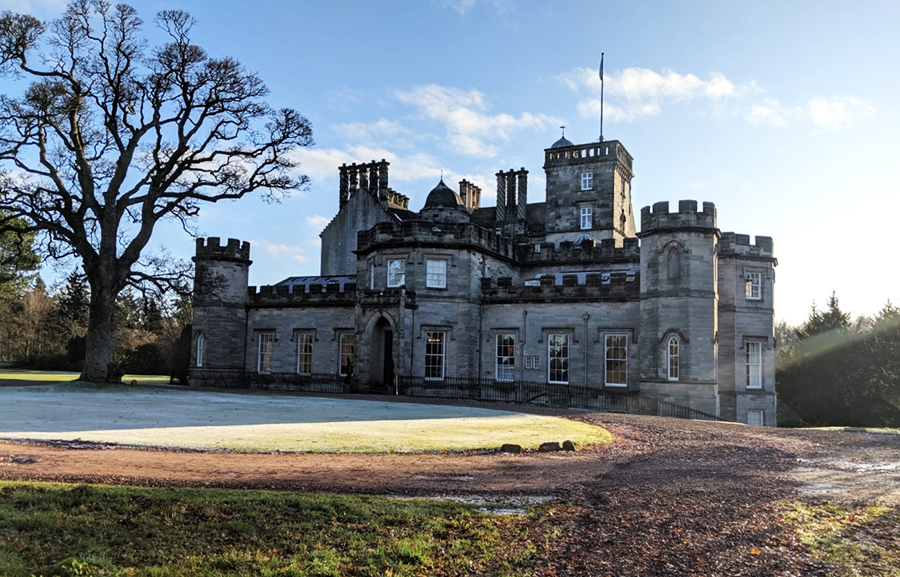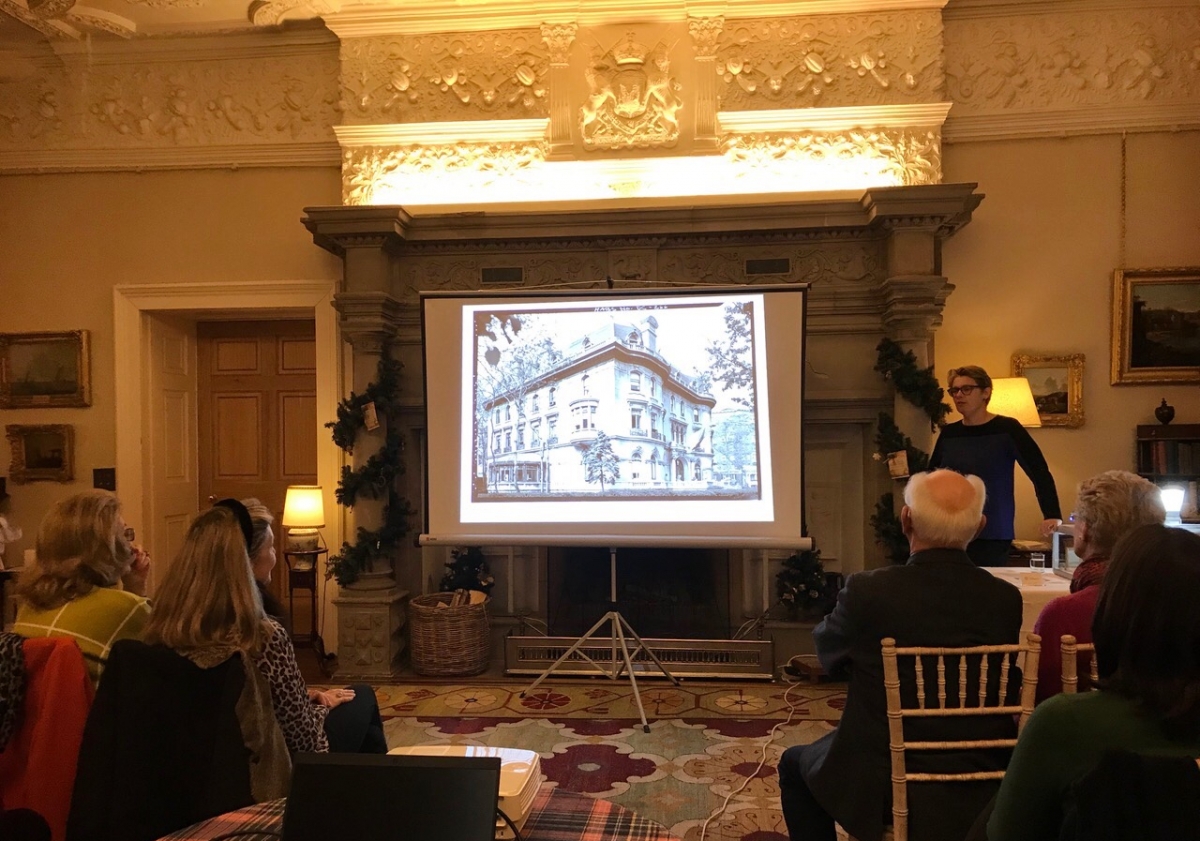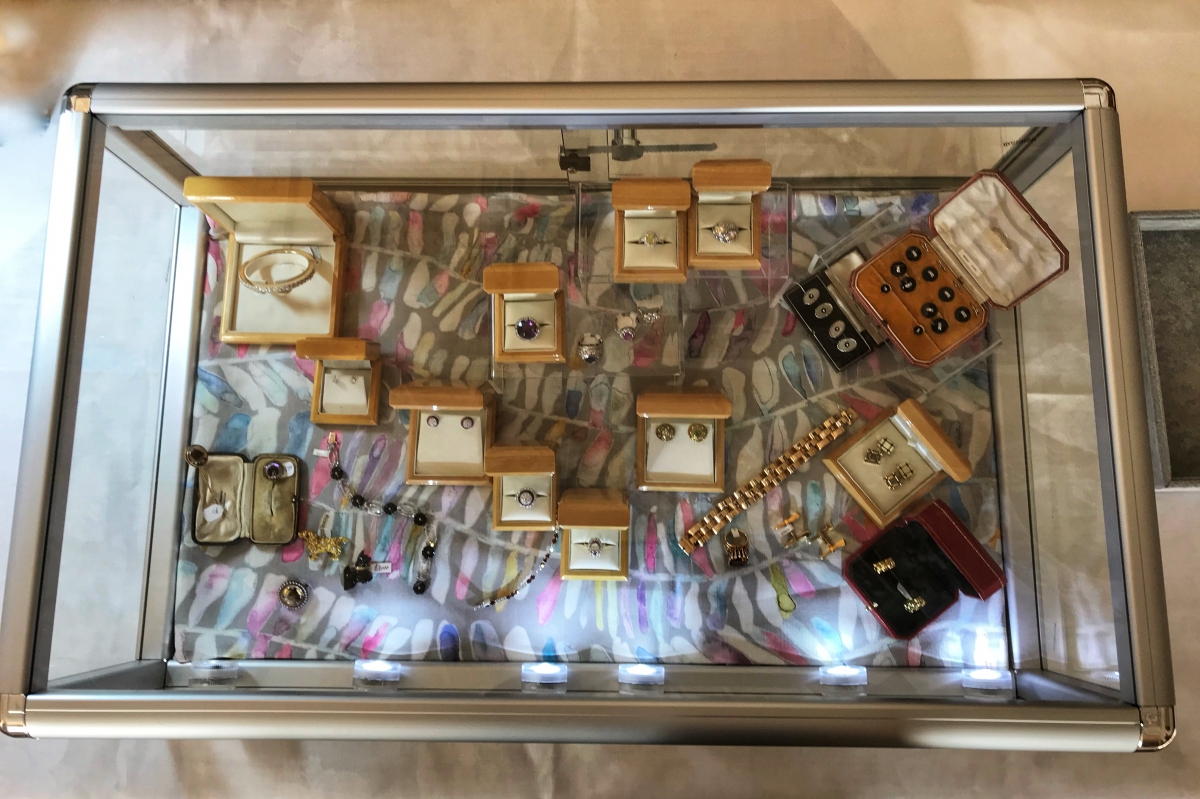
On Saturday 30th November, Winton Castle and I hosted an event called ‘Diamonds & Darjeeling’ which meant a delicious afternoon tea and lots of diamonds for the guests. What could be a nicer way of spending a Saturday afternoon?
I presented a talk called ‘The Fascination of Jewellery – Important Women Jewellery Collectors’ which looks at the jewellery of four very different women and their motivations for collecting. Some of the protagonists may not be immediately known to all but certainly pieces in their collections will have been heard of.
Evalyn Walsh McLean, at one time the owner of The Hope Diamond and The Star of The East Diamond, also owned the McLean diamond, which eventually became part of the collection of The Duchess of Windsor. She once said that if she wasn’t seen wearing jewellery, her family called in the doctors as there was clearly something wrong with her.
Marjorie Merriweather Post, whose collection of works by Fabergé undoubtedly remains one of the most important in the world, donated several significant jewels to The Smithsonian, such as the Empress Marie Louise’s diamond necklace, a gift from Napoleon I on the birth of their son, as well as a tiara given to her by Napoleon I on the occasion of their marriage. Her home in Washington DC, Hillwood, now run by a trust, and the philanthropic gifts to The Smithsonian ensures the public can see these pieces in perpetuity.

Elizabeth Taylor, avid jewellery collector, was a woman whose old school Hollywood glamour and lust for life led to her being the second woman in the presentation to have had a diamond named after her.
Madeleine Albright, Secretary of State under the Clinton administration, was known to use her brooches to pass messages to those she was meeting with and her detractors used her jewellery prominently in satirical cartoons. Jewellery as a vehicle for demonstrating political allegiance is not a new concept and Albright was following in the footsteps of, amongst others, the Jacobites and Suffragettes, who covertly displayed their beliefs through their choice of jewels. And of course, there has been recent speculation as to the motivation of Her Majesty, Queen Elizabeth II, in her choice of jewellery at various events and meetings. Baroness Hale also made the press recently with her decision to wear a large spider brooch on the day she declared Boris Johnson’s prorogation of parliament to be ‘void’.
There was a selection of jewellery which I had chosen for the event on view and guests very much enjoyed trying on some of the pieces, and inspired by collectors in the presentation, chose to add to their own collections. I am able to source antique jewellery, secondhand and vintage jewellery and modern jewels from the finest dealers in the country as well as have jewellery made for my clients.

The guests were then able to take a tour of the very lovely Winton Castle, which remains in private hands and is not open to the public other than through private events such as this one. Winton was built by the Setons following a grant of land by David I to Phillip de Sayton in 1150. Phillip’s grandson married the sister of King Robert ‘The Bruce’ of Scotland. In the sixteenth century, Henry VIII had Winton burnt in an effort to impress Mary Queen of Scots, and Mary Seton was later her Lady-in-Waiting. The Seton’s tenure lasted until 1715 when they backed the Jacobites and the Earl of Winton was taken to the Tower of London. The Earl’s capture ended an era when Kings were entertained and master craftsmen were engaged fresh from Edinburgh Castle to embellish Winton Castle in the style of the Scottish Renaissance. In the absence of the Earl but in his name, Winton was requisitioned by Bonnie Prince Charlie in 1745 when his rebel army camped on Winton Estate. The Hamilton Nisbets, who bought the Castle and Estate in 1779, linked it to one of the greatest inheritances of the 18th and 19th centuries. The furnishings came from all over Europe and the Turkish Empire and the impressive estates covered some of the country’s best farmland. Golf was not just a pastime but was carried out on estate land, which, at that time, included Muirfield and Gullane Links. Today Winton is the family home of Sir Francis and Lady Ogilvy. Do make contact if you would find out more about events at Winton. Huge thanks to Fay Hardwick and the team at Winton for making the event possible and the use of some of their images in this blog.
Please do subscribe to my mailing list if you would like to be kept informed of forthcoming jewellery events including future events to be held at Winton, or if you would be interested in hosting a jewellery event or talk.
